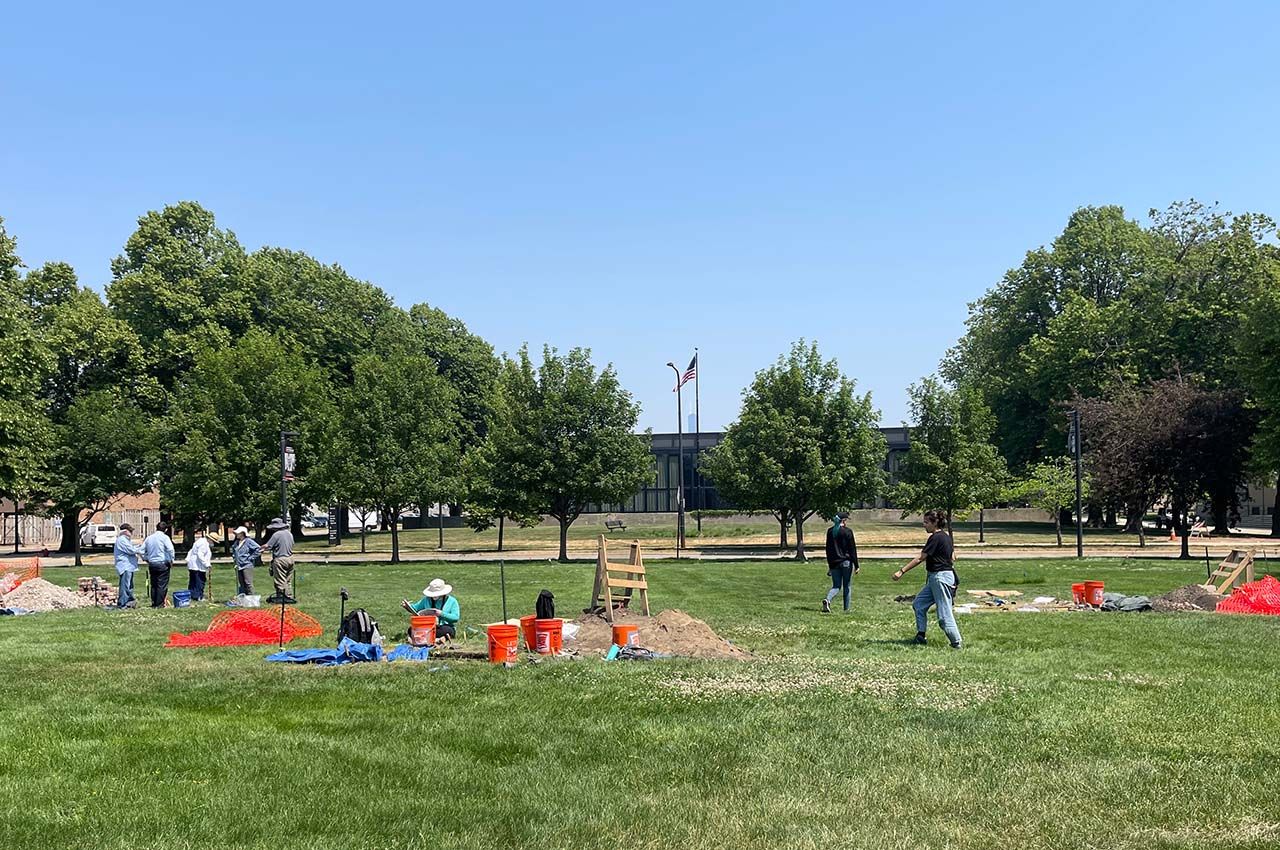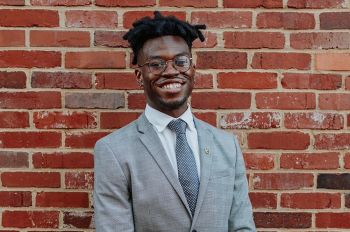Discovery on Mies: Local Students Uncover Hidden Treasures

Just a small piece of the history of Chicago’s Bronzeville neighborhood is hidden under the grass, dirt, and buildings that currently make up Illinois Institute of Technology’s Mies Campus, and many walk on that past every day. But the stories are not forgotten, and Chicago-area students are working to preserve a slice of the past.
More than a dozen undergraduates—most from Lake Forest College and co-led by Rebecca Graff, an associate professor of anthropology at the college, along with Shannon Martino of Morton College—took to the grassy field north of Paul V. Galvin Library in late May 2023. Equipped with shovels, gloves, and measuring tape, the group dug in four locations, each about four feet square.
“I’m seeing history at first glance,” says Ian Carranza, an incoming first-year student at Morton College and part of the group. “I’m part of it.”
Three weeks of digging unearthed a sampling of Bronzeville’s past, including evidence of the now-gone Armour Flats and nearby Armour Mission building, both of which would become key to the creation of Illinois Institute of Technology.
The first artifacts were found only inches under the grass instead of up to two feet that Graff expected, she says. “Instead of one meter of digging like at Jackson Park, it took 10 centimeters here,” Graff says.
Graff has spent nearly two decades unearthing the history buried in Chicago. Every three years, she invites students of any major to join a dig somewhere in the city. A partnership with Illinois Tech brought them to Mies Campus. “[The campus] is so important to flesh out the social structures of the area,” Graff says. “It’s a perfectly good spot for exploring how urban renewal changed this campus.”
Debris from the buildings’ demolition was the first to be uncovered, sometimes only with sod overtop bricks and remnants of trash and ash left by residents decades ago. Sand was dumped in other areas to even out the terrain, but the team sped through the loose soil. Students, lying on their stomach in the grass surrounding the holes, reached as deep as possible with their hands to avoid stepping on any discoveries.
And there were many.
A makeshift wall made from unearthed bricks partially surrounded one hole, while another bumped into the foundation of Mecca Flats. A partial porcelain doll reminded all that this was a place of life and happiness for many. “If that piece of wall could talk, it would tell a million stories,” Carranza says.
Graff says the partnership with Illinois Tech was fantastic, but future excavations will likely be elsewhere in the city as the search for historic Chicago continues on.




